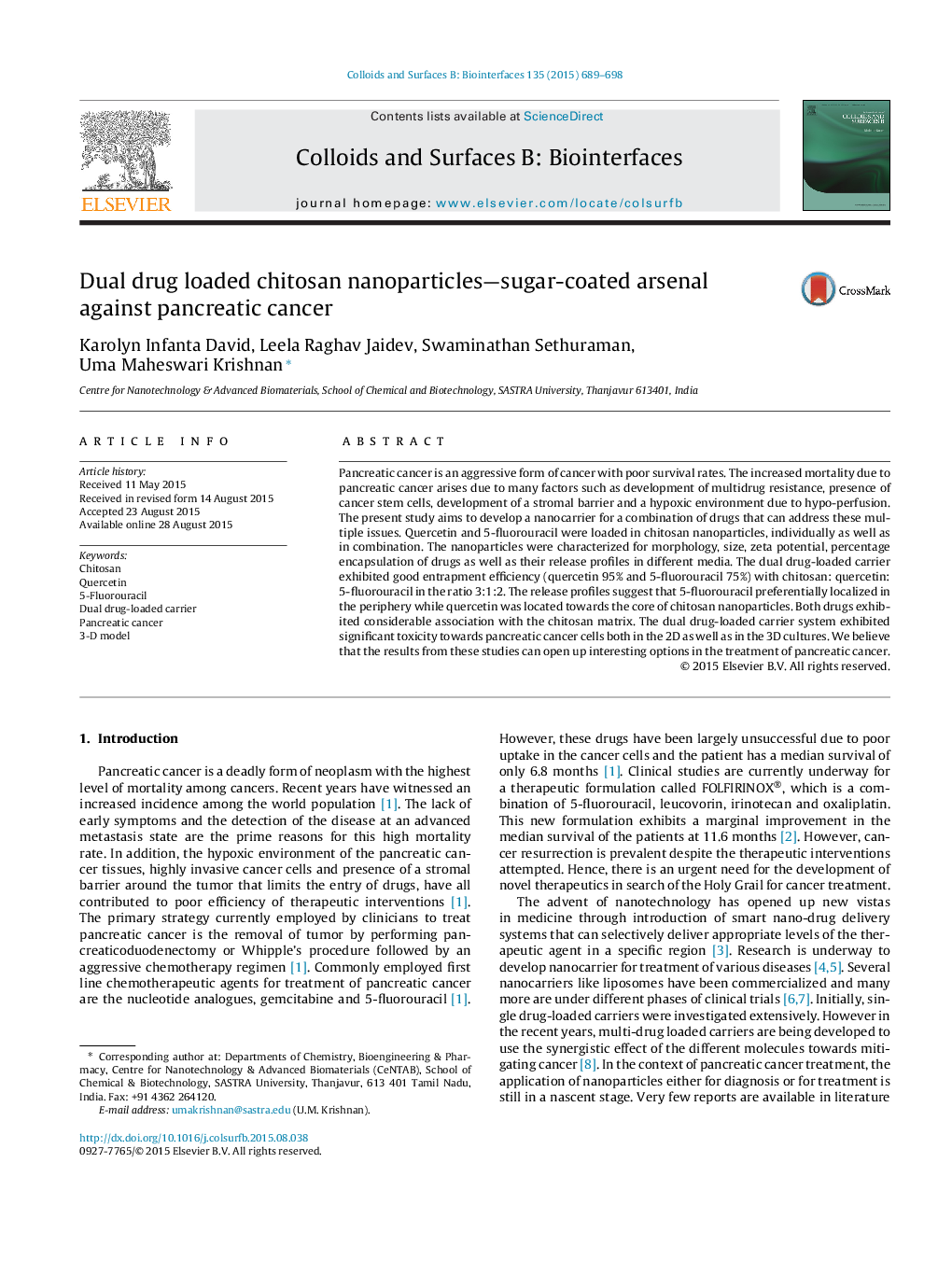| Article ID | Journal | Published Year | Pages | File Type |
|---|---|---|---|---|
| 599295 | Colloids and Surfaces B: Biointerfaces | 2015 | 10 Pages |
•High encapsulation efficiency of quercetin &5-fluorouracil in chitosan nanoparticles.•Dual-drug loaded carrier highly toxic against pancreatic cancer cells.•Significant toxicity of dual drug-loaded carrier in 3D cancer cultures.•Dual drug-loaded carrier reported for the first time against pancreatic cancer.
Pancreatic cancer is an aggressive form of cancer with poor survival rates. The increased mortality due to pancreatic cancer arises due to many factors such as development of multidrug resistance, presence of cancer stem cells, development of a stromal barrier and a hypoxic environment due to hypo-perfusion. The present study aims to develop a nanocarrier for a combination of drugs that can address these multiple issues. Quercetin and 5-fluorouracil were loaded in chitosan nanoparticles, individually as well as in combination. The nanoparticles were characterized for morphology, size, zeta potential, percentage encapsulation of drugs as well as their release profiles in different media. The dual drug-loaded carrier exhibited good entrapment efficiency (quercetin 95% and 5-fluorouracil 75%) with chitosan: quercetin: 5-fluorouracil in the ratio 3:1:2. The release profiles suggest that 5-fluorouracil preferentially localized in the periphery while quercetin was located towards the core of chitosan nanoparticles. Both drugs exhibited considerable association with the chitosan matrix. The dual drug-loaded carrier system exhibited significant toxicity towards pancreatic cancer cells both in the 2D as well as in the 3D cultures. We believe that the results from these studies can open up interesting options in the treatment of pancreatic cancer.
Graphical abstractFigure optionsDownload full-size imageDownload as PowerPoint slide
